



NT5000 Gigabit Managed Switches







NT5000 Gigabit Managed Switches


The collaboration between the Malaysian Palm Oil Board (MPOB) and Petroliam Nasional Bhd (Petronas) to conduct a study on the production of sustainable aviation fuel (SAF) using used cooking oil and palm waste as raw materials is a significant initiative in line with National Energy Policy 2022 - 2040 to reduce carbon emissions and make the energy sector a catalyst for the nation’s socioeconomic development.
The production of SAF from recycled materials such as used cooking oil and POME reflects a commitment to green technology, sustainability, and ethical economic practices, all of which are in line with the principles of the Madani Economy. The Madani Economy encourages efficient resource use. By converting waste materials into valuable SAF, this initiative demonstrates a desire to maximize resource efficiency and reduce the environmental impact of economic activities.
Sustainability in Malaysia’s economy is not limited to environmental concerns but also includes economic viability. SAF production can create new economic opportunities, contribute to job creation, and also support the growth of a sustainable aviation industry. This approach can contribute to Malaysia’s efforts to create a more environmentally friendly and economically sustainable aviation industry.
On behalf of the editorial team, thank you for your massive support of Automate Asia Magazine. Stay in touch with us at www. asiaautomate.com for more updates.
FBI Publications (M) Sdn Bhd (1168942-P)

Unit 9-3, Jalan PJU 5/6, Dataran Sunway, Kota Damansara, 47810 Petaling Jaya, Selangor.
Tel: (+603) 6151 9178
Vanny Lim vanny@asiafbi.com
Nur Izyan binti Dzulkifli izyandzul@asiafbi.com
Atthira Zawana atthirazawana@asiafbi.com
Muhammad Fadzil design@asiafbi.com
• Allied Vision Technologies Asia Pte. Ltd.
• ifm Electronic Pte. Ltd.
• Red Lion
MAGAZINE COVER PAGE
• Phoenix Contact (SEA) Pte Ltd
MMS PRINT SHOP (M) SDN. BHD. (1246387-v)
NO 43G, Jalan PBS 14/2, Taman Perindustrian Bukit Serdang, 43300 Seri Kembangan, Selangor.
Despite the constant care and attention that we devote to the structure of this magazine and the information it contains, Automate Asia Magazine cannot guarantee the completeness, accuracy of the data and content of the magazine, nor that it is up to date at all times. Automate Asia Magazine therefore accepts no liability for any direct or indirect damage of any kind whatsoever that arises from, or is in any way related to, the use of the magazine of its accessibility or lack thereof.
The assertionand opinions expressed in articles and announcements on this magazine reflect the views of the author(s) and do not (necessarily) reflect the views of the publisher. Automate Asia Magazine can in no way whatsoever be held responsible for the content of such views nor can it be held liable for any direct or indirect damage that may aris from such views
Automate Asia Magazine cannot guarantee that the information in this magazine is suitable for the purpose for which you consult it. All information, products and services are offered in the condition in which they actually are and without any (implicit)guarantee or warranty in respect of their reliability, suitability for a particular purpose or otherwise.
Automate Asia Magazine neither guarantees nor supports any product of service mentioned in this magazine, or does it warrant any assertions made by the manufactures of such products. In light of this , readers of this magazine are always recommended to obtain independent information and/or to perform independent research before using the information acquired via this magazine.
The information in this magazine is regularly supplemented and/or modified. Automate Asia Magazine reserves the right to make any changes with immediate effect and without providing any notice therefore











8. MIDA: From an Agriculture Nation to a Sustainable Industry 4.0 Powerhouse

12. Malaysia’s Semiconductor Sector to Reach RM212.5b by 2028
14. Artificial Intelligence and Automation: SMEs Must Not Miss the Boat Low-Cost Automation from Germany Promises ObstacleFree Entry into The Robot Era
18. Fourier Intelligence Delivers Advance Rehab Robotics Center To WQ Park in Malaysia

22. RS Malaysia Expands Local Distribution Centre with the Launch of New Warehouse
24. Semiconductor Start-Up Silicon Box Opens $2.65 Billion Factory in S’pore, Set to Hire 1,200 People
26. Singapore IoT Multi-Sensing Platform Nami Raises $10.5m Series A Funding
28. Malaysia In Position to Ride IoT Tech Wave
PG 18
29. Spacex’s Starlink to Benefit IoT Development, Industries in Malaysia: Analyst

30. Singapore’s Beep Raises Seed Round from GGV Capital and Wing Vasiksiri
PG
34. Application of Short-wave Infrared (SWIR) Imaging in the Semiconductor Industry30. Pure and Ultra-Pure Water Treatment Systems
38. Ifm Condition Monitoring Solution for Pump, A Win-Win-Service for Pentair
42. The Promise of Digital Transformation Begins with Industrial Data
46. Optimizing Smart Manufacturing with Rockwell Automation’s Solution: Interview with Shovan Sengupta, Regional Vice President, Market Access, Asia Pacific, at Rockwell Automation

50. Revolutionizing the Next Century with Advanced Solutions for Industrial Sustainability: An Interview with Charlie Lim, Vice President (Industrial Components & Electronics), Phoenix Contact Southeast Asia
32. Singapore’s Fourier Intelligence Launches Advanced Rehab Robotics Centre To Expand Rehabilitation Tech Solutions PG
♦Sony IMX 990/991 SWIR sensor





♦ Small size, Low weight & power

♦ Visible + SWIR sensativity(400〜1700nm)
♦ Various interface options:
GigE/5GigE/USB3 Vision/MIPI CSI-2
♦ Multiple housing options
♦ C/CS/S lens mount
♦Extended temperature range: -20℃〜+65℃
♦ Various InGaAs sensor technologies supported, including visible SWIR and extended SWIR (400~2100nm)
♦ Camera Link/GigE Vision interface

♦ Scientific & robust industrial housing
♦ High frame rate:
968fps(QVGA), 321fps(VGA), 130fps(SXGA)
♦ Longer exposure times up to 10s
♦ Thermo-electric sensor cooling for superb imaging performance with low noise

Malaysia has witnessed growth even before independence in 1957.
This year, Malaysia celebrates 66 years as an independent nation. We are a young nation by the standards of other countries, but 66 years is not a flash in the pan either. Amidst the centennial celebrations, it is worthwhile recalling the journey that Malaysia has made as a nation since its humble beginnings in 1957 as an agriculture-based economy.
Malaysia’s economic progress in a nutshell
Malaysia has witnessed growth even before independence in 1957.
The history of agricultural enterprise in Peninsular Malaysia begins in the 1780s with the arrival of the British in Penang. The compositional change within manufacturing was striking.

Industrialization began in the 1960s where the role of manufacturing was quite minor involving the processing of rubber, tin, timber, foodstuffs. In any case, these labor-intensive industries saw a steady decline through the 1970s.
There were significant changes in the factor intensities in the manufacturing sector due to significant investment in machinery and equipment toward more sophisticated technologies.
The manufacturing sector grew at 26.2 percent in 1970s, coupled with large increases in the prices of petroleum in 1974 and 1979, had led to high economic growth during the period.
Malaysia began to pursue an import substitution development strategy in 1960s and gradually moved toward an export-oriented industrialization strategy in the 1970s.
A key element of this strategy was to rely on foreign direct investment to achieve high economic growth through industrialization.
In response to this, the Federal Industrial Development Authority (FIDA) Act was incorporated in 1965, culminating in the establishment of FIDA by the end of 1967. On March 1, 1979, FIDA was officially renamed the Malaysian Industrial Development Authority (MIDA) to reflect a more Malaysian identity. In 2011, it had another name change to the Malaysian Investment Development Authority, retaining the MIDA acronym, to encompass a broader spectrum of activities, other than just industrial matters.
The manufacturing sector soon became a key driver of Malaysia’s economic growth, with electrical and electronics (E&E), textiles, and automotive industries taking center stage. The production of E&E goods, in particular, gained prominence, leading Malaysia to become a significant player in the global supply chain, attracting investments and driving economic expansion.
This strategy led to the establishment of special economic zones, such as the Penang Free Trade Zone, which attracted multinational corporations (MNCs) including 500 Fortunes to set up manufacturing facilities.
The first two decades of Malaysia’s economic history could be described as the “take-off” phase. The dominant theme in the third phase of Malaysia’s economic history was the overcoming of resource constraints through a significant restructuring of the economy.
In driving the country’s economic growth, a strategic long-term economic framework known as the Industrial
Master Plan has been developed spanning a 15-year horizon and is complemented by shorter-term 5-year plans known as Malaysia Plans. The IMP aims to guide the nation’s industrialization, economic diversification, and sustainable growth with the focus on fostering innovation, enhancing productivity, and promoting value-added industries.
Today, the Twelfth Malaysia Plan (12MP) further enhances Malaysia’s dynamic industrial landscape into a manufacturing powerhouse with a strong focus on embracing Industry 4.0 through automation and digitalization. While the manufacturing sector has evolved and moved up the value chain over the last five decades, this was the first time the entire economy was undergoing such a transition.
For instance, Intel’s sprawling semiconductor manufacturing facility in Penang exemplifies the integration of advanced technologies and local talent. The company’s investment not only drives economic growth but also fosters knowledge transfer and skill development, contributing to Malaysia’s long-term competitiveness. The idea of Malaysia as a manufacturing powerhouse was not new,
yet it was revitalized, with a newfound determination.
As the government’s principal investment promotion and development agency under the Ministry of Investment, Trade and Industry (MITI), MIDA assumes its pivotal role to oversee and drive the investments into the country. Its mandate extends beyond the manufacturing sector, now encompassing selected services sectors as well. As of today, Malaysia continues to position itself as a choice location for global investors for manufacturing and services sectors.
Malaysia was well-positioned for the pervasive digitalization of the global economy that occurred in the 2020s and this led to the digital era marked by Industry 4.0.
Recognizing the potential of automation, artificial intelligence (AI), and digitalization in revolutionizing manufacturing processes, the country leverages on these technological advancements and digitalization to further accelerate its economic transformation.

The profound synergy established between Industry 4.0 and the digital revolution do not only propel industries forward but also reshapes consumer behavior, ushering in a new era of online purchases and personalized experiences.
The convergence of Industry 4.0 and the digital revolution indeed gives rise to a dynamic and ever-evolving landscape that not only redefines conventional economic norms, but also molds the future of consumption patterns.
Guided by the implemented framework and policies in place, such as 12MP, the National Investment Aspirations (NIA), New Investment Policy (NIP), National Fourth Industrial Revolution (4IR) and Malaysia Digital Economy Blueprint, or MyDigital, renowned global corporations such as Amazon Web Services, Western Digital, and ExxonMobil have established significant operations in Malaysia. The country’s investor-friendly policies, and well-developed infrastructure have positioned it as an ideal gateway for MNCs seeking to tap into the Southeast Asian market.
The recently launched Madani Economy framework also stands as a robust strategy
aimed at elevating the economy and bolstering national competitiveness.
It envisions to position Malaysia as one of the top 30 major economies within a decade, setting its sights on achieving remarkable global stature.
Complemented with the New Energy Transition Roadmap (NETR), a strategic blueprint designed to catalyze transformative change, these strategic initiatives are not merely aimed at reinvigorating economic growth, but also serves as a resounding testament to
Malaysia’s commitment to sustainable practices through the pursuit of opening up profitable ventures that are wholesomely good for the environment and economy.
As Malaysia advances its industrialization journey, it remains committed to sustainable development, balancing economic growth with environmental stewardship.
The government’s comprehensive policies, encapsulated within 12MP and the Green Technology Master Plan, underscore its determination to strike a balance between economic growth and environmental preservation.

Climate change had become the defining issue facing the global economy, including Malaysia. It has been the key driver of the transformation of our economy over the last 20 over years.
The Global Climate Change Compact of 2030 – with subsequent reviews every ten years – was probably the most important international agreement in history.
Malaysia’s ambitious target of achieving net zero carbon emissions by 2050 is
a testament to its proactive stance in combating climate change and fostering a greener future.
In the area of climate change adaptation, MITI and MIDA have embarked on bold steps towards enabling and achieving sustainable development and positioning
Malaysia as an attractive destination for ESG-related investments. In line with this, MITI is finalizing the National Environmental, Social and Governance Framework, known as the i-ESG Framework for the manufacturing sector, which is expected to be completed in 2024.
In addition, the National Energy Policy 2022-2040 (NEP) also offers a detailed roadmap for the energy sector. This forward-looking policy is anchored in a visionary goal known as the Low Carbon Aspiration 2040, which envisions a considerable annual contribution of RM13 billion to GDP by attracting
investments that spur the growth of low carbon technologies. This paves the way for Malaysia to excel in promising sectors like renewable energy (RE), energy storage, low carbon mobility, and hydrogen economy 5, potentially creating more than 207,000 new job opportunities and drawing in investments worth RM9.2 billion.
Beyond economic factors, Malaysia’s development journey owes much to its rakyat – its people. The resilience, dedication, and spirit of Malaysians have been instrumental in propelling the nation’s progress. Their collective commitment has synergized with the invisible hand of the market and the visible hand of good governance, enabling Malaysia’s remarkable economic transformation.
Malaysia’s semiconductor sector is projected to achieve a compounded annual growth rate (CAGR) of 7%, reaching a total output of US$46 billion (RM212.52 billion) by 2028.

According to a recent report by Eastspring Investments and PwC Singapore, the manufacturing industry in Malaysia contributes nearly 25% of the country’s GDP and boasts strong integration with global value chains.
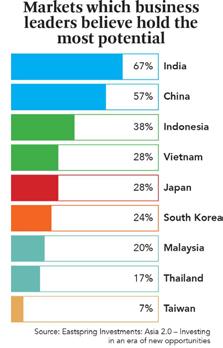
The report highlights the opportunities available in two key sectors: Semiconductors and manufacturing, as Malaysia strengthens its manufacturing capabilities and trade links.
As a well-established assembly and testing hub within the global semiconductor supply chain, Malaysia is expected to experience significant growth. Outsourced semiconductor assembly and
testing (OSAT) vendors and ancillary companies providing support services such as precision cleaning, refurbishment and testing equipment are predicted to benefit from the rising global demand for semiconductors.
Furthermore, the report suggests that Malaysia’s OSAT players expanding into China will unlock further growth opportunities.
The study also identifies growth prospects for smart industrial machinery manufacturers as they embrace Industry 4.0 solutions in sectors like automotive, electrical and electronics, and medical devices.
Government initiatives aimed at modernizing healthcare facilities and promoting the production of high-end medical equipment present additional opportunities.
Medical device manufacturers focusing on implantable devices, patient monitors, imaging equipment, and more are expected to witness substantial growth, with medical device sales projected to increase from US$1.9 billion in 2021 to US$3.6 billion by 2030.
The report is part of a whitepaper titled “Asia 2.0 — Investing in an Era of New Opportunities”, which explores various dimensions of Asia’s ongoing transformation and the emerging opportunities for investors.
Asia has emerged as an economic powerhouse, exhibiting robust growth over the past decade and poised for further expansion after recovering from the pandemic.
Projections indicate that by 2030, Asia will contribute over 40% of the world’s GDP. Ignoring this immense potential and the accompanying opportunities would be ill-advised.
The report said that Asia is currently undergoing a transformative phase characterized by demographic shifts, increased consumer spending,
Source: themalaysianreserve.com
technological advancements and widespread innovation.




With a thriving start-up ecosystem and a unique combination of established economies and high-growth emerging markets, Asia has become an attractive destination for investors.
Factors such as digitalization, alignment with global environmental, social, and governance (ESG) taxonomies, and

strengthened regional partnerships add to the array of distinctive opportunities available.
Based on a survey of 100 C-suite business leaders, the report reveals that 67% of respondents believe India holds the most potential for expansion or transformation opportunities, followed by China (57%) and Indonesia (38%).
In today’s manufacturing landscape, the authors see a small number of factories that set automation standards - from artificial intelligence to digital twins to self-learning robots. Artificial intelligence in particular proved to be one of the topics that dominated automatica. The rapid pace of development here heralds a new era of automation. The study indicates that the majority of factories are still a long way from the levels of digitization and automation that are actually possible today. They risk falling behind in a time of rapid change.
Accountants, journalists and even computer scientists are all amazed at how rapidly automation is developing, including with artificial intelligence. Industry representatives are, too. They are drawing new ideas for smart factories. Many traditional SMEs, however, are in danger of falling behind. Low-Cost Automation can provide immediate assistance and help them avoid missing the boat.
According to the International Federation of Robotics (IFR), more and more robots are carrying out work in factories. In 2022, the global stock reached a new record of 3.5 million robots, worth an estimated €15.7 billion. Still, the world is a long way from rapid growth, according to a study that McKinsey, a management consultancy firm, recently conducted on the occasion of automatica 2023, a major trade show.
How can not only big players with serious budgets, but also SMEs that have so far had little contact with these issues, participate in the future of AI automation? The key here is Low-Cost Automation, automation solutions that are inexpensive and undemanding. The market segment has great growth potential. Low-Cost Automation providers have increasingly entered the market in recent years, offering robots at a fraction of the price of classic industrial robots. They use web shops to allow solution configuration in a few clicks - without expensive integrators. And, thanks to so-called no-code technology, robots can even be

controlled as easily as a computer game. IFR figures indicate that these important factors can easily be adjusted. They show that programming and integrating a robot application currently accounts for up to 70% of the total costs.

RBTX.com: inexpensive robot components from different manufacturers from a single source with price and compatibility guarantees
igus GmbH is one of the providers of Low-Cost Automation. To enable SMEs to enter the automation age, the Colognebased plastics company builds robots at competitive prices. The ReBeL, for example, costs only €4,970 in Germany. The “made in Cologne” cobot is made almost entirely of high-performance plastic and suitable for such applications as loading and unloading machines in industry and serving beer in service. To help interested parties find exactly the right automation solution for their application and budget, igus has created RBTX.com. The online marketplace brings together manufacturers and users of low-cost robotics. Over 100 partners now offer their products here. An online tool allows the combination of robots, machine frames, grippers, conveyor belts etc. and even the testing of movement very simply with drag and drop in a 3D
model on the computer. In future, these functions will also be available in virtual reality. igus has already created its own metaverse for this - the iguverse. No programming knowledge is required.
“Several thousand SMEs from all over the world have already implemented automation solutions on RBTX.com – from an earthworm farm to a baker who packs doughnuts,” says Alexander Mühlens, Head of the Low-Cost Automation Business Unit at igus. “95% of the more than 400 solutions involve an investment of less than €12,000. Since the launch of RBTX, we have seen increasing interest. The platform offers more low-cost solutions than any other we know of. We
have now provided consultation on over 2,500 projects and sent several thousand robots to the global market. Of course, you have to remember that not every task can be automated with low-cost robotics especially when very heavy loads need moving or extreme precision is required. However, a wide range of work steps can be automated cost-effectively today. In addition to medium-sized companies, large corporations also use the platform. Every euro saved or quickly amortized counts. The advantage of RBTX is that users get low-cost robotic components from different manufacturers from a single source - and always with a price and compatibility guarantee. Providers have the opportunity to open up new target groups and sales channels for their products. It’s a win-win situation for everyone involved.”


SL Innovation Capital Bhd (SLIC), through wholly owned subsidiary, CR Distribution Sdn Bhd, today signed an exclusive distributorship with Cyclone Robotics Malaysia Sdn Bhd to drive hyperautomation in Malaysia.

SLIC said the partnership will enable it to capture opportunities arising from the digital transformation of companies through the use of Robotic Process Automation solutions.
Hyperautomation is a comprehensive approach where businesses leverage a range of cutting-edge technologies like artificial intelligence, RPA and business
process management and more to identify, validate and automate business and IT processes.
SLIC managing director Soon Seng Teck said hyperautomation is projected to grow in the coming years, underpinned by the increasing need for process optimisation, cost efficiency and enhanced customer experiences.

He added that local companies are recognising the potential of hyperautomation to gain a competitive edge in the global market.
“Cyclone Robotics is the new hyperautomation which got a lot of potential for the future and we are looking forward to have this type of software to run together. As far as I’m aware, Malaysia right now does not have this type of software and it is important for
us to appreciate their software,” he told reporters after the signing ceremony.
On SLIC’s recent announcement to transfer from the LEAP Market to the ACE Market of Bursa Malaysia, Soon hopes to complete the process by the first quarter of 2024, and shared that it is in the process of due diligence and preparation work.
“The LEAP market has limited investors, only sophisticated investors, the fundraising and liquidity of the market has a limit. For SLIC to go to the next phase of growth, we will need to tap into a larger pool of investors,” he said.
The proposed transfer will involve, among others, an issuance of new shares in the group to the general public. It is the midst of finalising the scheme, Soon said, as “we also need to consider the
CR Distribution CEO Edmund Low said it anticipates to expand regionally within three years by 2026.
“It is already in the pipeline, but if we have the funding, we can move faster. Otherwise, it is not going to stop us. We would still move with our plans ... maybe two or three years. We want to make sure Malaysia is properly set up, and then we will move on to other countries, by 2026,” he added.


Singapore-based technology firm Fourier Intelligence has delivered an advance rehab robotics center to the newly launched WQ Park in Kuantan, to empower accessible rehabilitation technology for Malaysia’s East Coast.
Fourier Intelligence said in a statement on Monday that the East Coast in Malaysia will now see a comprehensive range of advanced rehabilitation technology as the firm supplies its dynamic range of rehabilitative solutions to WQ Park.
This is in line with the recent launch of its advanced rehab robotics center (ARRC) in Kuala Lumpur, where Fourier Intelligence aims to utilize its new facility to serve as a direct waypoint for the domestic medical industry to obtain the latest advancements in rehabilitation technology.
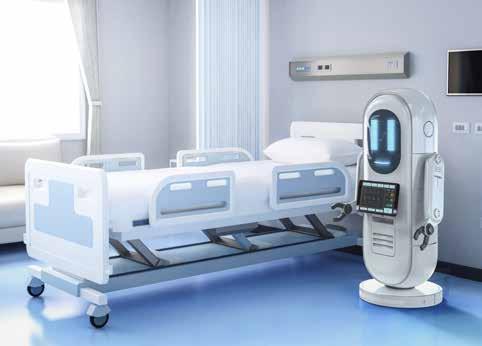

In addition, it also aims to cater for the growing demand for rehabilitation technology globally.
“The World Health Organization (WHO) has estimated that over 1 billion people are affected by disabilities that impact their mobility and independence,
“By harnessing the power of robotics and engineering, we can transform countless lives and redefine the future of
rehabilitation,” said Zen Koh, Co-Founder and Global Chief Executive Officer of Fourier Intelligence.
“At Fourier Intelligence, we aim to empower therapists and patients alike. We are glad that local institutions such as WQ Park are utilizing our devices to provide rehabilitative solutions to Malaysians,
“Through this, we believe that it will be able to assist and drive growth in Malaysia and the Southeast Asian Region,” he added.
Fourier Intelligence is a technology company dedicated to developing

exoskeleton and rehabilitation robotics with a focus on creativity since its inception in 2015.
The company collaborates with researchers, therapists, and patients to deliver cutting-edge rehabilitation robotics solutions.
Fourier Intelligence aims to elevate user experience through its interconnectable intelligent robotics technology, providing an intuitive, easy-to-use system that enhances the lives of both patients and therapists.
With its diverse portfolio of more than 30 products and 200 turnkey solutions, the firm specializes in developing advanced robotic exoskeletons and virtual realitybased therapy platforms to address needs for upper, lower, balance and movement impairments.
Coupled with gamified therapy, these innovations enable healthcare providers to deliver personalized and effective rehabilitation programs, improving the patient’s overall recovery outcomes and quality of life.
Bosch, a leading global supplier of technology and services, has opened one of Asia’s most advanced semiconductor backend sites for chips in Penang for the final testing of its automotive chips and sensors.
Until the middle of 2030, Bosch intends to invest around 350 million EUR (RM1.62 billion) in the site at the Batu Kawan Industrial Park (BKIP).

With the opening, the company continues to systematically reinforce its semiconductor business and manufacturing footprint to meet global chip demand.
Member of the Bosch Mobility Sector Board responsible for operations, Klaus Maeder, said semiconductors were key to the success of all Bosch’s business areas.
“The Penang backend site is a key component in our growth strategy in the mobility sector as we respond to the increased demand for semiconductors.
“We chose to invest in Penang for its high level of semiconductor knowledge and skilled workforce. The proximity to business partners and customers is another advantage, as it will shorten delivery times and distances for the chips,” he said at the inauguration of the Bosch
semiconductor backend site by caretaker Chief Minister Chow Kon Yeow at the BKIP here.
Present were Malaysian Investment Development Authority (MIDA) chief executive officer Datuk Wira Arham Abdul Rahman and Federal Republic of Germany in Penang honorary consul Datuk Hans Peter Brenner.
With a land area of 100,000 square meters, the facility in Penang is the first of its kind in Bosch’s Southeast Asia region.
It will primarily focus on the backend, which is final testing of chips

Chow said Penang was delighted to house Bosch’s semiconductor backend site at the BKIP, which is the Group’s fourth facility in the state, following the automotive electronics, power tools, and automotive steering manufacturing plants.
Bosch is one of the pioneer investors in Penang which established its manufacturing presence in this Silicon Valley of the East since 1972.
“We deeply appreciate your invaluable contribution towards Penang which spearheaded our industrialization half a century ago. Fast forward to today, Penang is delighted to house your semiconductor backend site at the BKIP. “This latest facility in Penang affirms the strong confidence of Bosch in our ecosystem’s capability to fulfil the stringent requirements in the automotive sector.
The Group’s sustained confidence augurs well for the state’s development, thus encouraging us to strive not only harder in what we do well but also greater in our niche area.

“Hence, I am confident for Bosch’s investment project to deepen the state’s engineering expertise in automotive semiconductor industry, while creating greater opportunities for our local supply chain and of course, job opportunities for local talents,” he said.
Chow said the significance of Penang on the global scale was well attested, proven by the state’s significant role in the E&E industry, which accounted for over five per cent of the global semiconductor sales over the past few years.
As the economic powerhouse of Malaysia, Penang topped the nation’s list in 2021 with export value of RM354 billion recorded.
The external trade momentum persisted into 2022, reaching an all-time high of RM463 billion, representing 30 per cent of the country’s total. In particular, 74 per cent of the said amount is contributed by E&E, represented nearly 60 per cent of the country’s E&E total.
In terms of investment performance, the state garnered RM13.7 billion in total approved manufacturing investments in 2022, of which foreign direct investments (FDI) contributed 71 per cent of the total investment inflows.
In the first quarter of 2023, Penang is the second highest contributor for the country’s approved manufacturing investments.
The RM3.3 billion recorded in January to March 2023 comprises 35 manufacturing projects, which is estimated to create 2,217 new job opportunities in the state.

RS Group plc (LSE: RS1), a global omni-channel provider of product and service solutions, has expanded its distribution center in Malaysia with the launch of a new 50,000 sq. ft warehouse as part of its strategy to ensure future growth and expand its range of service offerings.
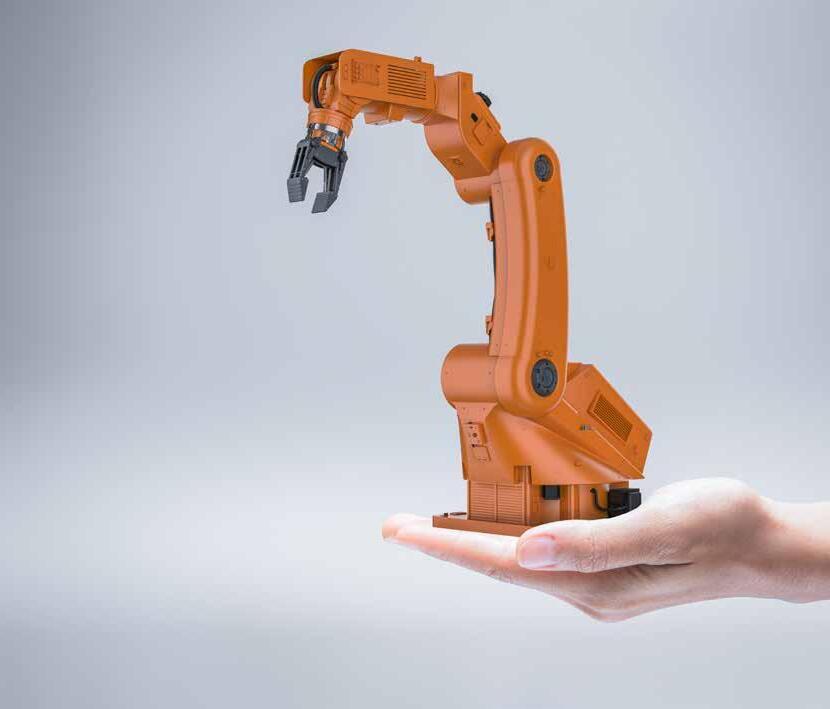
Acknowledging the significance of minimizing maintenance and equipment downtime, the facility is strategically located within Mapletree Logistics hub in Shah Alam, Klang Valley. The location is conveniently situated 25 minutes (approximately 22 kilometers) away from Klang Sea Port and 50 minutes (around 56 kilometers) away from KLIA International Airport. This setup allows
for a quick order fulfilment time of only one to two days for local businesses.
In collaboration with Geodis MY, the warehouse is outfitted with comprehensive wireless coverage and is Industry 4.0 ready, with plans to integrate radio frequency technology and other IoT devices in the near future. The facility is also equipped with RS’s SAP and vendormanaged inventory systems, enabling efficient operations management, allowing for greater spend visibility and reductions in process costs. This is further complemented by Geodis’ warehouse management system which ensures efficient inventory storage and retrieval functions.
Sean Er Lim, Country General Manager, RS Malaysia, said, “Malaysia is a strategic market for RS, and the increase in capacity will enable us to offer a wider range of products and services to our customers. This warehouse signifies RS’ continued commitment to Malaysia’s industry4WRD (Industry 4.0) initiative, providing businesses with the necessary industrial and electronic solutions to embrace Industry 4.0. Our diverse array of innovative solutions will simplify the transition for businesses looking to embrace the next industrial revolution.







Silicon Box, a semiconductor design and device integration services startup, unveiled its new US$2 billion (S$2.65 billion) factory in Singapore.
The 73,000 sq m facility in Tampines is designed to manufacture semiconductor chiplet interconnections that can be applied in areas such as artificial intelligence, electric vehicles and wearables.
According to Singapore-based Silicon Box, the factory will create up to 1,200 roles ranging from engineers to digital experts.
It will also provide upskilling opportunities, with support from the Economic Development Board (EDB).
Chief executive and co-founder Han Byung Joon said that the start-up built its factory here because of Singapore’s reputation as a global innovation hub and its skilled workforce.
Dr Han added that Singapore’s strong governance was a crucial factor in choosing the city state as a location for its factory.
“With my experience, I know which country is working in terms of talent and the ease of doing business. I will say that Singapore has a very efficient government,” he said.
Founded in 2021, Silicon Box’s proprietary chiplet-to-chiplet
interconnection technology connects chiplets such that its clients can design flexibly with higher performance and lower energy consumption.
Chiplets are small components with unique functionalities that can be built into larger semiconductor chips.
Silicon Box has raised US$208 million across its seed, Series A and Simple Agreement for Future Equity funding rounds.
The investments came from various sources, including family offices, an initial round half funded by Silicon Box’s three co-founders themselves, and venture capital firms such as BRV Capital Management and Ignite Innovation Fund. Its Series B funding is ongoing.
Silicon Box’s decision to set up its first manufacturing and research and development facility is a testament to the country’s competitiveness as a critical global node for semiconductors, said EDB chairman Png Cheong Boon.

Mr Png said at the opening ceremony: “Over the years, we have built up leading positions in several manufacturing sectors, including semiconductors. The semiconductor industry contributes to more than 7 per cent (of) our GDP, and is Singapore’s largest manufacturing sector.”
He added: “Despite near-term headwinds arising from factors such as high interest rates and continued inflationary pressures, the long-term trajectory of the semiconductor industry remains very strong.”

Singapore accounts for 11 per cent of the global semiconductor market share, and approximately 20 per cent of global semiconductor equipment is manufactured in the city-state.
Worldwide chip sales declined 21.6 per cent year on year in April 2023, while the latest industry forecast projects an annual downturn of 10.3 per cent in 2023, followed by an increase of 11.9 per cent in 2024, according to the Washington-based Semiconductor Industry Association.


But the global chip industry is set to surge past US$1 trillion in market value by the end of this decade, double the size of today’s market.
Silicon Box’s new headquarters follows expansion plans in Singapore by its global peers.

In July 2022, French semiconductor materials supplier Soitec announced that it would invest $593 million to double the capacity of its wafer fabrication plant in Singapore.


In December, American semiconductor equipment maker Applied Materials
announced that it would build a $600 million plant in Tampines that would expand its manufacturing and research operations, and create 1,000 new jobs.
Silicon Box’s launch of their manufacturing facility in Singapore on July 20, 2023. ST PHOTO: EUGENE TANNami, a Singapore-based multisensing platform and ecosystem enabler for the Internet of Things (IoT) industry, has announced the close of its Series A financing round, raising $10.5 million.
Nami said in a statement it has raised the funds from strategic investors including Verizon Ventures, Amavi Capital, INSPiRE and Aconterra.
With this new funding, nami is poised to expand its team and geographical presence to rapidly deploy its advanced digital sensing infrastructure across residential and commercial buildings on three continents.
“This funding round empowers nami to achieve our mission of building an ecosystem of AI sensors that cater to IoT players, internet service providers, insurance companies, and others across multiple verticals,” said Jean-Eudes Leroy,
Co-Founder and Chief Executive Officer of nami.
“Our innovative nami app brings peace of mind to families with security, safety, and wellness use cases while ensuring the utmost privacy,
“Additionally, our partners’ applications and dashboards utilize data from our API to enhance automation, complement their security solution and improve health outcomes in different types of environments,” he added.
Nami is a firm delivers artificial intelligence (AI)-powered digital sensing solutions to players in the security, safety, HealthTech, PropTech, and energy optimization fields through hardwareaugmented software.

The firm enables enterprise customers to rapidly deploy intelligent presence, motion, and situation-aware IoT services.
Its full-stack platform ingests raw sensor data, augments it into actionable metadata, and uses it to trigger automation across entire IoT environment, delivering unprecedented use cases.
Over the past two years, nami has developed a powerful platform for software-based sensing applications, featuring cutting-edge sensing topologies and associated intellectual property.
Two of the nami Co-Founders, JeanEudes and Jérôme Leroy, serve as active members of the Connectivity Standards Alliance (CSA), part of the steering committee of the new CSA Health & Wellness workgroup, and chair Matter’s RF Ambient Sensing Workgroup.
“At Verizon Ventures, we invest in companies whose innovative solutions leverage 5G and other advanced network technologies to deliver impactful new capabilities for both consumers and
business customers,” said Michelle McCarthy, Managing Director at Verizon Ventures.
According to her, nami’s talented and seasoned team has laid out an impressive new vision for connected homes, transforming them into intelligent living spaces.
“We look forward to supporting them as they develop digital sensing infrastructure for residential and commercial buildings in Asia, Europe and North America,” she said.
Meanwhile, Amavi Capital Managing Partner Frédéric Van Weghe said the firm is thrilled to be part of the nami project, which aims to digitize walls and ceilings through non-intrusive sensing technology.
“In the wake of the global agenda for carbon neutrality in residential and
commercial buildings, the ability to deploy non-line-of-sight sensing technology across wide surfaces, detecting occupancy, is a major leap forward for the PropTech industry,” he said.
Fund Representative Director Ryosuke Takatsuki also said it is a great journey to build investment foundations for nami and proactively contribute to grow its business in Japan.
“We are very excited by our cooperation with nami in Health & Wellness space for Mimamori project in Japan,
“Together, we pave the way for properly aging in place thanks to the right mix of AI and IoT technologies, made easy to deploy. Just Japan itself is a target market of 26 million elderly households for AgeTech,” he added.

Aconterra Founding Partner Ron
Schuermans also said IoT services on motion and presence are vital to reduce the carbon footprint and to increase the safety of people in residential and commercial buildings.
“Nami’s multi-sensing platform realizes this in a highly scalable way by using existing widely adopted technology that doesn’t require line of sight,” he said.
He also said situation awareness of people can be a global gamechanger for many use cases including energy management, alarm detection, and elderly monitoring.
“We’re thrilled to welcome nami in Aconterra’s smart building tech ecosystem and to support such an amazing team,” he added.
Malaysia is currently in an excellent position to capitalize on the economic opportunities generated by the Internet of Things (IoT) technologies.
Head of KasperskyOS Business Unit, Andrey Suvorov said with the National IoT Strategic Roadmap in place, coupled with the established electric and electronic as well as telecommunication sectors and a strong small and medium enterprise sector, the IoT industry is set to excel in the country.
Citing data from the Malaysian Digital and Economy Corporation, he said Malaysia is expected to lead the growth of Southeast Asia’s digital economy, which is predicted to expand to US$1 trillion (US$1=RM4.54) by 2030.
“IoT is the backbone of digital transformation as it helps businesses to improve efficiency through the automation of tasks and processes, while enhancing productivity and assisting
companies to make better decisions.
“To this end, Malaysia will need to address the issues in setting up a comprehensive IoT ecosystem; standardizing IoT technologies as well as security and privacy,” he told Bernama.
Suvorov said there is also a need to change the approach to cybersecurity to reap the full benefits of IoT in the digital economy while maintaining the security aspect at the same time.

“Here at Kaspersky, we have taken a specific approach known as Cyber Immunity, where the products are secure by design and will be able to withstand the majority of attacks without the need for additional protection tools,” he added. Suvorov commended the Malaysian government’s upcoming launch of the National Cybersecurity Commission, and noted that the government has always been proactive in the area of cybersecurity. Nonetheless, he said that
there is still room for improvement in the sector, and emphasized that businesses need to invest in security training for employees, given the shortage of cybersecurity professionals.
At the same time, the media should raise awareness on cybersecurity among consumers, as the professional community needs to grow.
“It is also important to work hand-inhand with the public and private sectors, especially in pooling resources, sharing of information, intelligence and joint solutions in combating cybersecurity challenges,” Suvorov said, noting that CyberSecurity Malaysia has a team working on the Malaysian Vulnerability Assessment Centre.

He said that Kaspersky has joined the Malaysia IoT Association recently, and plans to contribute towards enhancing Malaysia’s cyber resilience, together with other market players in the IoT value chain.
“It is always a good idea to cooperate with global cybersecurity experts to stay updated on the latest trends, share the expertise and grow the knowledge base,” he said.
Kaspersky is a global cybersecurity and digital privacy company, with expertise in threat intelligence and security, offering leading endpoint protection and specialized security solutions to over 400 million users and 240,000 corporate clients worldwide.

The PM said collaboration between the government and Elon Musk is expected to create tens of thousands of skilled job opportunities.
The participation of SpaceX’s satellite services Starlink in Malaysia is expected to have a positive impact on the development of Internet of Things (IoT) connectivity and new industrial use cases, an analyst said.
GlobalData principal analyst Alfie Amir noted that SpaceX’s Starlink presence in the country will greatly benefit industries while complementing Malaysia’s significant development in Internet connectivity.
“What we see now is that telecommunication companies globally are increasingly adding low earth orbit (LEO) satellites through partnerships with satellite operators such as Starlink.

“The use cases on this partnership are mainly for the IoT connectivity in remote areas -- to increase network reliability, as backup and for critical communications,“ he told Bernama.
Earlier today, Prime Minister Datuk Seri Anwar Ibrahim had a 25-minute video conference with the founder and chief executive officer (CEO) of SpaceX, Elon Musk.
The discussion which mainly focused
on the field of electric vehicle (EV), also revolved around SpaceX’s participation which can contribute to faster and more widespread Internet access, especially in rural areas.
Anwar noted that the collaboration between the Malaysian government and Musk is expected to create tens of thousands of skilled job opportunities in the country while confirming at least three local companies to be involved in the project with SpaceX.
Also participating in the virtual meeting with Musk, who is also the CEO of Tesla Inc, are Minister of Investment, Trade and Industry Tengku Datuk Seri Zafrul Abdul Aziz and Minister of Communications and Digital Fahmi Fadzil.
In the meantime, Tengku Zafrul in his Facebook posting today reaffirmed that further discussion on the collaboration between SpaceX’s Starlink and the
Malaysian government will take place soon.
Meanwhile, commenting on the success of the meeting, Sunway University economics professor Dr Yeah Kim Leng highlighted that the fruitful discussion between Anwar and Musk has actually sparked a chain reaction with further commitments agreed between the two parties.
“Besides the investment of Tesla’s Malaysian office that will contribute to Malaysia’s EV industry drive, the other significant potential collaboration is the Starlink satellite services that will bring down Internet costs and reduce the urban-rural digital divide.
“The positive reception from the meeting will also contribute in a small but meaningful way to strengthening investors’ confidence towards the country,” he said.
Beep, a Singapore-based internet of things (IOT) transaction platform startup has successfully completed its seed round, with GGV Capital and Wing Vasiksiri as the lead investors.
Beep said in a statement on Thursday that the round saw additional participation from NUS Technology Holdings (a fully owned subsidiary of NUS), SUTD Venture Holdings, XA Network, and other prominent angel investors.
According to the statement, the funds will be used to enhance technical connectivity and roll out the largest roaming network in Southeast Asia, amidst expansion plans into Malaysia, Thailand, and beyond.
Beep said it will continue to work closely with additional charge point operators,
vehicle original equipment manufacturers (OEMs), and fleets to expand the network collaboratively and on a permissioned basis.

“Southeast Asia is experiencing a key inflection point in its journey towards a fully electric future, with Singapore playing a leading role due to our relative maturity and charging network density,” said Kristoffer Jacek Soh, Co-Founder and Chief Executive Officer of Beep.
“We strongly believe that for mass adoption to successfully pick up, charging connectivity must be seamless, interoperable and collaborative,
“Today marks another step in our mission to build a truly accessible network for the ecosystem,” he added.
Beep has also on Thursday announced
the successful launch of Southeast Asia’s largest electric vehicle roaming (eRoaming) network spanning over 1350 charge points, together with 11 operators in Singapore.
This includes the nation’s three largest operators – SP Group, ComfortDelGro ENGIE (CDG ENGIE) and Charge+, and strategic providers including QuickCharge, MNL Solutions and Go by City Energy.
Since its inception in 2018, Beep’s mission has been to revolutionize the traditional vending machine industry by enabling cashless transactions through its innovative IoT platform.
After collaborating with the Singapore Government to power nationwide distributions during the pandemic, Beep launched Voltality in 2021- an
eMobility platform aimed at creating seamless charging experiences for businesses and drivers. Beep has achieved significant progress with its vision of an integrated ecosystem, including charging stations, payment services, and vehicles.
In June 2022, it launched the region’s first eRoaming pilot with five operators.
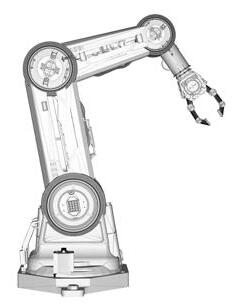
“Charge+ is now a leading electric vehicle (EV) charging player in Singapore and Southeast Asia, with our ongoing plan
to build a 5,000km EV charging highway across five countries,
“This partnership with Voltality will extend our network coverage and provide a more seamless experience for our EV drivers.” said Goh Chee Kiong, Chief Executive Officer of Charge+.
Meanwhile, CDG ENGIE General Manager Freddie Chew said that the firm is fully dedicated to supporting Singapore’s transition to green mobility.
“In line with this commitment, we have been actively expanding our charging network and developing innovative solutions to meet the evolving needs of EV drivers,” he said.
He also said being involved in Beep’s Voltality enhances the accessibility of the firm’s stations for commercial drivers as they have the convenience of using a single interface to pay for EV charging across multiple networks.
“As our charging infrastructure grows, CDG ENGIE’s partnership in Voltality will serve to strengthen the adoption of
EVs with its simple and easily accessible payment solution,” he added.
According to the statement, Beep’s platform acts as a universal translator, seamlessly integrating different charging systems used by various operators.
This eliminates the need for operators to undergo additional integration efforts.
Instead of developing a proprietary Voltality charging app, Beep offers a white-labelled website or Application Programming Interface (API).
This allows vehicle manufacturers, charging operators, and fleets to integrate charging connectivity into their existing applications or interfaces.

It is noted that Hyundai Motor Group Innovation Center in Singapore (HMGICS), Tribecar, EVFY, Singapore Electric Vehicles, and Quantum Mobility are among the first to utilize the network, establishing access to a variety of mutually consenting participating operators on agreed terms.

Singapore-based rehabilitation technology provider Fourier Intelligence has launched its Advanced Rehab Robotics Centre in Malaysia.
Fourier Intelligence said in a statement on Tuesday that the new centre will act as a strategic hub to support Fourier Intelligence’s business operations and further strengthen its commitment to
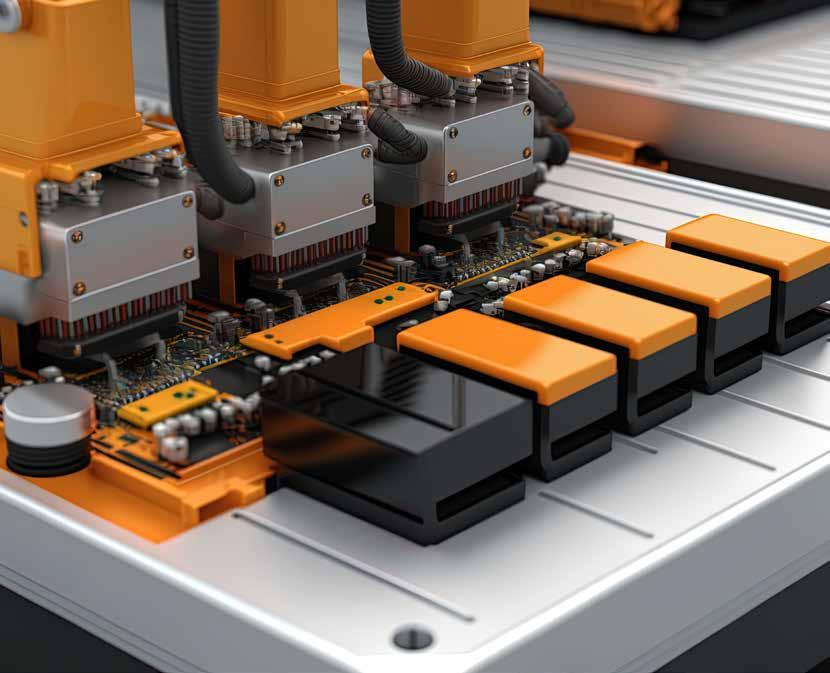

providing cutting-edge rehabilitation and assistive technology solutions to the Southeast Asian market.
“We are thrilled to launch our new Advanced Rehab Robotics Centre here, as it allows us to serve our regional stakeholders better,” said Zen Koh, CoFounder and Global Chief Executive Officer of Fourier Intelligence.
According to him, the rehabilitation tech industry in Asia is still in the early adoption phase, and he hopes to elevate this through the firm’s offerings in this region.
“This aligns with our mission to empower therapists and patients through advanced robotics and artificial intelligence (AI) solutions,
“We look forward to driving the Malaysian and overall Southeast Asian markets forward and anticipate facilitating stronger collaborations with local partners, healthcare professionals, and research institutions to drive innovation and enhance patient care,” he added.

He also noted that Fourier Intelligence is driven by knowledge sharing and he believes that collaboration is key to advancing the rehabilitation industry, as it enables industry partners to forge closer ties and share knowledge for the betterment of the sector.
“We hope that with our new Advanced Rehab Robotics Centre in place, we can see a huge growth in rehabilitation technology and wider adoption of intelligent rehabilitation,” he said.

Fourier Intelligence is a technology company dedicated to developing exoskeleton and rehabilitation robotics with a focus on creativity since its inception in 2015.
The firm is backed by Saudi Aramco’s Prosperity7 Venture, and has successfully raised $62 million in funding.

With over 2,000 installations and a market presence in 56 countries globally, the company focuses on rehabilitation
technology that aims to empower patients and therapists using robotics and artificial intelligence.
With a diverse portfolio of more than 30 products and 200 turnkey solutions, Fourier Intelligence specializes in developing advanced robotic exoskeletons and virtual reality-based therapy platforms to address needs for upper, lower, balance and movement impairments.
Coupled with gamified therapy, these innovations enable healthcare providers to deliver personalized and effective rehabilitation programs, improving the patient’s overall recovery outcomes and quality of life.
Already establishing a prominent presence in Malaysia through multiple large-scale projects with Sunway Medical Centre, Pertubuhan Keselamatan Sosial (PERKESO) and WQ Park, Fourier Intelligence aims to serve as a direct waypoint for the domestic medical industry to obtain the latest advancements in rehabilitation technology.
Short-wave infrared (SWIR) cameras open up numerous possibilities for machine vision solutions since they detect invisible product flaws as well as specific material characteristics: In contrast to mainstream machine vision cameras with CMOS or CCD sensors, most SWIR cameras have an InGaAs (Indium Gallium Arsenide) sensor and typically detect wavelengths between 900 nm and 1,700 nm. Newer
sensors also support a spectral range extension to the visible or beyond 1.700 nm up to 2.500 nm. Wavelengths beyond 750 nm are invisible to the human eye and CCD or CMOS cameras can detect light only up to ~1050 nm. Thus, the application fields for SWIR cameras are much broader, for example, water accumulations inside plants or defects within silicon products.
The semiconductor industry has become one of the largest industries in the world and continues to expand. Manufacturing


integrated circuits (ICs or chips) on thin silicon discs (wafers) is at the heart of this industry.
Cameras with InGaAs sensors typically operate in the SWIR spectral range between 900 nm and 1,700 nm and can image through semiconductor materials such as silicon (Si) at wavelengths around 1,150 nm. Thus, they are an essential part of the inspection process. The ability to image through Si provides a nondestructive inspection method with great
benefits for the production process. Today, the semiconductor industry integrates InGaAs cameras into testing, inspection, and quality control systems.

Inspecting silicon crystals and ingots (also called bricks) is one of the classic applications for InGaAs cameras in the semiconductor industry. The ability to see through silicon at a wavelength range above 1,150 nm makes InGaAs cameras a wellsuited solution for detecting inclusions such as impurities within a crystal or ingot, which can accumulate during the production process. The impurities are critical when sawing the ingots into thin wafers with a special diamond chain. If the chain strikes an inclusion such as a small piece of metal, the extremely expensive
chain can break. Not only does replacing a chain carry a cost but also leads to lower productivity and reduced profit. A SWIR camera can prevent this situation and thus ensure a smooth production process.
Another important application for SWIR cameras is the wafer inspection. During the manufacturing process of wafers, particles may occur on the top, at the bottom, and even inside or between the wafers. Whereas CCD or CMOS cameras detect particles on the top and at the bottom, InGaAs cameras see through the silicon and therefore detect particles between two bonded wafers.
InGaAs cameras are also used for wafer packaging, where the alignment of the backside pattern to the front side of the

wafer is conducted. The SWIR technology helps align layers of wafers as well as align other sub-products such as ICs, memory cells, or transistors along the entire supply chain.
SWIR cameras can cover the inspection process of the whole supply chain from the silicon crystal to the ingots/bricks, wafers, solar cells, and finally the solar modules. Since InGaAs cameras image through silicon, they are the most effective solution to detect physical defects within the silicon.
Besides SWIR imaging, which is a recent inspection technology, other important technologies, and methods are common within the photovoltaics industry: Photoluminescence (PL) and electroluminescence (EL) are the usual methods for inspection purposes.

PL imaging uses optical excitation (for example, laser illumination) to generate electron-hole pairs, which cause emissions by radiative recombination and thus can be detected by the camera. The band-toband emission around 1,150 nm provides information on defects and dislocation clusters inside the silicon. Moreover, mapping the defect-band luminescence at around 1,550 nm delivers results regarding the limit of the final cell efficiency. Therefore, the detection sensitivity of the InGaAs camera from 900 nm to 1,700 nm suits the application perfectly.
In contrast, electroluminescence is the result of the radiative recombination of electrons and holes in the silicon. Voltage is applied to the solar cell, which leads to the recombination of the available holes. The result is the emission of photons depending on the band gap of the absorber material (silicon 1,150 nm).
Besides crystalline silicon, other types of solar cells or module materials (also called thin film solar) can be inspected: Copper indium gallium diselenide (CIGS) is inspected at a wavelength of 700 nm to 1,330 nm (depending on the indium/gallium ratio) and copper indium diselenide (CIS) at a wavelength of 1,330 nm.
The main advantage of SWIR over CCD and CMOS cameras is the shorter exposure time with excellent quantum efficiency (QE) at the prime silicon emission wavelengths ensuring a quick characterization during the manufacturing process. CCD or CMOS cameras need longer exposure times of up to 30 seconds. Even NIR-enhanced CCD sensors need exposure times of up to 3 seconds or more. In contrast, SWIR cameras need only a few milliseconds and thus significantly accelerate production.

Allied Vision has many years of experience in the development of shortwave infrared cameras with InGaAs sensor technology. With this comprehensive expertise, Allied Vision provides optimized cameras with outstanding image quality in terms of homogeneity, dynamics, and linearity for a wide range of applications. The current product portfolio includes models with and without thermoelectric sensor cooling. For scientifically-oriented applications, cameras with two-stage thermoelectric sensor cooling (TEC2), nitrogen cooling chamber, and fan are also available, which enable particularly low-noise image acquisition with long exposure times.
Alvium SWIR cameras support a spectral range from 400 nm to 1700 nm at high quantum efficiencies. This allows to capture images in both the visible and SWIR spectra with a single camera and

enables users to reduce overall system costs.


Goldeye SWIR cameras enable us to see beyond the visible at very high frame rates and to capture low-noise images with high linearity and dynamic range. Thereby comprehensive onboard image correction and optimization features help to get the best possible imaging results, reproducible at any time due to the integrated sensor temperature stabilization, which is very suitable for both scientific and industrial applications.
SWIR camera applications can also be widely used in several fields such as material sorting, recycling, metal and
glass inspection, agriculture, laser beam profiling, and airborne remote sensing. To understand more, please download our whitepaper “Short-wave infrared (SWIR) cameras offer versatile application fields in machine vision”.

At Pentair in Winterswijk, the Netherlands, pumps have been manufactured for over 118 years. The company has grown from a family-owned business into a global leader in water solutions. The pumps and pump systems are designed, produced, and tested entirely in-house. By responding effectively to customers’ needs and developments in the market, the company already has many innovations attached to its name.
Under the Pentair Fairbanks Nijhuis brand, the global company produces smart and sustainable pumping solutions for municipal and industrial water supply.

“The pumps are used, for example, in drinking water supply, water treatment,

firefighting, regional heating water distribution, and in the onshore and offshore industry,” says Jeroen Munnik, head of the Pentair Service Centre in Zevenbergen, which – together with the Service Centres in Beverwijk and Tynaarlo – ensures that customers receive all the support they need when dealing with pumps: from inspections, preventive and corrective maintenance, the procurement and replacement of pumps to prompt support in the event of acute maintenance needs. In case of emergency, the experts are ready around the clock.
For the past three years, Pentair has no longer relied solely on manual service by on-site specialists for customer support. “With our condition monitoring solution Pentair CMD19, we also offer our customers the modern possibilities of efficient demand-oriented maintenance based on the evaluation of the vibration behavior of the system. This can be a pump and an impeller or an industrial fan,” says Jeroen Munnik.
Jeroen Munnik is also convinced by the clear presentation of the vibration values in IFM’s software: “It doesn’t get any better than this, “says Munnik.
Pentair CMD19 was developed together with the automation solutions provider ifm. “At the beginning of our development, we looked around the market and identified ifm as the supplier that completely convinced us in terms of their portfolio, technical support, and assistance.”

And so, the complete condition monitoring package includes sensors, diagnostic electronics, and software for vibration monitoring, as well as additional temperature sensors.

“The fact that we have been able to considerably expand our expertise in vibration analysis in the past three years is due on the one hand to ifm’s support, but also to the detailed presentation of the values in ifm‘s software. Once configured,

the traffic light system provides a transparent view of the current health status of the monitored system. It doesn’t get any better than this,” says Jeroen Munnik.
Customers are also convinced of the automated condition monitoring using sensors.
“I remember an incident at a customers’ who installed the modem variant of our solution, the CMD19-M. Through the modem, we directly receive the actual data of the customer’s system. One day we received an alarm and found foreign matter in the pump’s impeller. We informed the maintenance manager, and he was amazed because he had not noticed any change himself. After maintenance and the confirmed findings, he was thrilled that we had saved the company from a more costly repair with possible pump parts replacement.”
This customer saved around 40,000 euros because condition monitoring helped prevent damage to the mechanical seals. Thanks to the expertise gained in vibration analysis, Jeroen Munnik’s team can also forecast error patterns occurring at short notice and take the necessary maintenance measures.
“If we detect foreign matter in the impeller, we can assess whether the blockage will clear up on its own or if the pump needs to be shut down and serviced.”
Thanks to all these benefits, Munnik sees the future of pump monitoring in condition monitoring. “Whether it is operated on-site by the customer, or whether we act remotely as a service provider, the solution is win-win. The customer and our service team can act in time before significant damage to a pump occurs. At the same time, maintenance staff can be deployed where there is a real need. The early alarm and the condition-based replacement of worn parts ultimately lead to low operational costs. Furthermore, vibration behavior
helps us determine the degree of wear and assess whether a component needs replacement at the scheduled time or if it is still functional. The bottom line is that condition monitoring is an investment in the future that pays off very quickly.”

With the help of ifm’s solution portfolio for condition monitoring, Pentair has developed a solution for its customers that maximizes the maintenance effort’s efficiency for both sides. Thanks to the acquired expertise in vibration analysis, Pentair’s Dutch team can support its customers with precise fault assessments and recommendations for action to lower the total cost of ownership.

The bottom line is that condition monitoring is an investment in the future that pays off very quickly.


It’s an exciting time for industrial enterprises. The United States is seeing considerable growth from reshoring and global industry is thriving. And while inflation and labor shortages introduce new stresses, that pressure is speeding up the uptake of new optimizations and automation.
The most significant and dynamic change, however, is Artificial Intelligence (AI). Industrial businesses, alongside businesses around the world of every shape and size, are under pressure to digitally transform. Leveraging AI is key to staying ahead in the modern industrial landscape. Those insights are needed
to optimize manufacturing, improve scheduling, do predictive maintenance, bring new efficiencies to operations, and bring added precision and clarity to business decision-making.
Seizing the moment and moving forward with AI is a plausible goal. AI-derived insights can help businesses discover opportunities. They can help companies produce more, save more, earn more, gain efficiencies, grow, and modernize. The baseline for those discoveries is, of course, data.
For many industrial companies, this is where the dream of digital transformation dissolves into a series of question marks.
The one I hear from business owners and sector leaders every day is: “How can we get data from our industrial systems?” Those who run small-to-medium-sized operations have the most questions. With less capital to play with for digital transformation, the stakes are high, as is the cost of investment.
For them, digital transformation can be a messy business. For them, data isn’t magic. It’s not ones and zeros and instant uploads and seamless connections. Industrial businesses have the physical world to contend with. Their systems might be in rugged, remote locations. Their equipment might be on factory floors in a range of countries and time zones simultaneously. Their installations might be in areas marked by extreme
weather conditions. Their operations might encompass hundreds of pieces of specialized legacy equipment on plant floors dotted across the country.
Industrial companies are eager to embrace data and leverage digital tools to grow, learn, and scale. The problem is, they need no-nonsense ways of extracting data from operational technology (OT). Not only that, but they need ways to connect it, group it, share it, secure it, and visualize it.

As with most significant change opportunities, the first mile is the hardest. That’s certainly true for industrial data. Depending on the nature of your business,
you know it’s not always easy to access data platforms. Some of you face heat waves, flooding, and sub-zero weather conditions. Any system you invest in to derive and deliver data needs to be robust and ruggedized to survive those conditions.
Furthermore, a lot of perfectly wellfunctioning industrial and manufacturing processes have evolved over decades. Just look at power and utility generators, transportation infrastructure, and wastewater plants. Old doesn’t mean bad. Most companies don’t have the luxury or, more importantly, the need to start over from scratch. Old machines that have stood the test of time are fixed to plant floors alongside state-of-the-art equipment. That wild mix of legacy and
new technology is commonplace across many industry sectors. At the same time, that variety complicates data extraction.
Industrial companies need simple data access solutions that can speak across their systems, however varied, unique, or outdated. Without them, data stays locked away. To follow through with digital transformation plans, companies need a way to gather data securely and reliably, independent of any single Programmable Logic Controller (PLC) or automation manufacturer software. And while exciting new startups are entering the process optimization space, many are simply too new to grasp the unique challenges involved in extracting industrial data and making it usable to decision-makers.
Many enterprises consist of remote assets, such as water treatment plants, solar power plants, wind turbines, or decentralized power generation units. To derive insights, they need to access equipment installed on-site and bring data to a central location.
We’ve worked with a packaging supplier, for instance, with packaging machines all over the world. It wanted to integrate system data from all those sites, to analyze it and help its customers. However, software-focused solutions simply couldn’t understand all the vendor installations to achieve the necessary centralization.
Cloud connectivity, edge intelligence, and asset management for industrial environments demand specialized access capability. That might mean access to older controllers and remote field sensors actuators, and integration with multivendor environments.

After that, those assets need to connect. Some companies need to link robots to an automotive plant. Others need to plug sections of individual wind turbines together, then connect those turbines to others across a vast geographical area. That kind of networking isn’t a software problem, it’s hardware.
Installations need ruggedized industrial networking solutions and Ethernet switches to direct and secure outgoing data and function without interruption. Once that reliability is achieved, those can plug into middle software layers or a Manufacturing Enterprise System (MES) for higher-level analytics. It’s a big game of “connect the dots,” but for data.
Finally, companies need to visualize data, to make it actionable on-site and beyond. Operators on the factory floor and in the field need counters, temperatures, and digital readings of values that can be used at the moment and sent to the cloud. For that, they need Internet of Things
(IoT) devices that are compatible with very specific manufacturing shop floor machinery and for remote and rugged field environments.
Access, connectivity, and visualization devices might seem like standalone or dissimilar elements, but they come together to perform one essential job: they form the critical bridge between OT and IT. Those departments might traditionally have different priorities and strengths, but they must work together. The right hardware and software configuration can be that bridge.
Today, data transfer and storage need to meet increasingly stringent security and regulatory requirements. They also need to meet customer expectations for speed and flexibility. That usually means OT needs stricter access control and new strategies to shield data and systems from attack. On the other hand, sometimes IT
lacks a correlating context to make OT data meaningful. The data might be in the cloud, but it’s supplied too late or lacks contextualizing detail. As a result, OT is stuck in a reactive position, prevented from making predictive decisions or getting ahead of likely production or maintenance scenarios. The OT equipment is what generates profit; its data needs to be made intelligible to decision-makers to unlock insights and drive growth.
The key to bridging the two perspectives is a platform that unites the features of OT and IT with maximum interoperability. We’ve been working with industrial systems and data for 50 years. We’ve seen IT emerge and evolve, and we understand the evolving needs of both IT and OT audiences. For these departments to come together and serve each other, enterprise connectivity solutions need to be simple to use, resilient, intuitive, and secure. They need to be durable and deployable right out of the box.
Those of you who’ve worked in the industrial space for as long as we have are hardwired for different kinds of challenges and solutions. We’re entering an amazing new era of AI-powered productivity, but no matter how dazzling it might seem, data isn’t magic. You can’t slap a softwareonly solution on top of these installations and just press a button.
You have to have a deep grasp of the ins and outs of data gathering in hard-toreach spaces, across legacy technology that works well for a reason. You need to know how to deliver that information efficiently, securely, and intact, to different communities of users to benefit the business.
Industrial companies need someone who understands the challenges and particularities of industrial data –accessing it, connecting it, and visualizing

it – so the critical data analytics processes layered on top of that work instantly, seamlessly, and robustly. They need a trusted partner to unlock the promise of digital transformation. Given our track record in this domain, we are that partner. We are THE Industrial Data Company™.
That transformation journey starts with that messy but exhilarating first mile. Over the coming weeks, I’m going to dig deeper into aspects of this journey, with insights and customer stories that illustrate why industrial contexts are different and why industrial data needs special expertise, technology, and hardware.
There are a lot of data companies out there. What does it mean to be THE Industrial Data Company?
To find out, follow us on LinkedIn® and join the conversation.

Interview with Shovan Sengupta, Regional Vice President, Market Access, Asia Pacific, at Rockwell Automation

Shovan joined Rockwell in 2021 as channel director, Asia Pacific. Since then, he has played a key role in leading the company’s channel strategy working with value-added distributors, specialty distributors, and authorized resellers. Following the acquisition of Fiix, Shovan implemented the Fiix Partner Pilot program and the Information Software Value-Added Reseller Program in the region. He is based in Singapore.
1. The industrial automation services market in Asia Pacific is expected to reach US$ 74.35 billion by 2027 and Singapore dominates the Southeast Asian market. What are the benefits and gaps that businesses need to address?
Rockwell Automation recently hosted our annual PartnerNetwork Conference in Kuala Lumpur in May. The conference brought together industry leaders to discuss how businesses can connect these emerging trends to build and activate solutions for our joint customers. We had partners from India in the West to Japan in the East and all the way down to new Zealand in the South. What was clear was that the benefits and challenges of making manufacturing smarter are remarkably similar across the region.
This was borne out in Rockwell’s 8th Annual State of Smart Manufacturing Report which highlighted many of
the benefits and gaps that businesses must navigate. Businesses stand to be more sustainable, more efficient, and more productive by utilizing industrial automation services. According to our report, 29% believe that smart manufacturing has already helped them to keep pace with market transformations
and to mitigate the lingering impact of the pandemic.
The streamlined processes help reduce human errors and boost overall output. Cost savings are another advantage, stemming from reduced labor costs and optimized resource utilization.



Furthermore, automation services drive more consistent product quality due to standardized production processes.
While the benefits are proven, many companies face challenges with implementation.
According to the report, 48% of businesses report a lack of skills to manage smart manufacturing initiatives as the biggest barrier to adoption, while 46% report employee resistance to new technologies as the biggest barrier. Change management is therefore a key component of successful technology adoption, particularly when technology adoption adds new growth opportunities for employees.
Adoption also remains a challenge as shown by the 26% of automotive manufacturers that cite technology
paralysis – an inability to decide between solutions – as one of their main obstacles to overcome.
Other considerations are cybersecurity, system integrations, and regulation. Cybersecurity becomes paramount to safeguard interconnected systems against potential threats. Integration complexities between new and existing systems require resolution. Navigating evolving regulations and compliance standards is essential.
2. How does Rockwell assist companies in their smart manufacturing journey in terms of cost efficiencies?

Many businesses are turning to smart manufacturing technology to help solve their production challenges. They are investing in areas that help to address
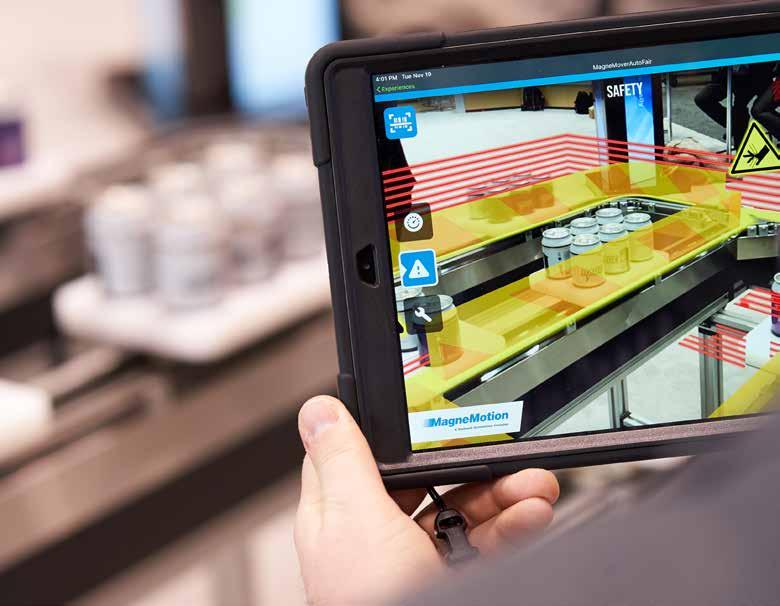
the skills shortage, machine learning, and artificial intelligence. Rockwell Automation supports manufacturers by providing hardware, software, and consulting services to address these needs.
Importantly, we don’t do it alone. We partner with other technology leaders, original equipment makers (OEMs), distributors, and system integrators to provide innovative solutions to businesses wherever they are on their smart manufacturing journey.
It’s also worth noting that while driving cost efficiencies is an important driver for smart manufacturing, it’s not the only benefit. Smart factories are also more sustainable, produce higher-quality goods, and are more resilient. Less waste and more efficient use of resources like power and water are good for manufacturers and good for the planet.
3. What are the challenges or barriers to the adoption of smart manufacturing that companies should consider?
Companies considering the adoption of smart manufacturing must contend with various challenges. These include potential resistance from the existing workforce due to fears of job displacement, the need for upskilling and reskilling employees to operate and maintain advanced systems, interoperability issues when integrating new technologies with legacy systems, cybersecurity risks in interconnected environments, and the complexities of managing and analyzing large volumes of data for actionable insights.
Addressing these challenges requires a comprehensive strategy that encompasses technological, organizational, and

cultural changes to ensure the successful implementation of smart manufacturing practices. Rockwell and our partners are well-placed to help manufacturers navigate these complexities.
4. What is your view on the growth of smart manufacturing in the Asia Pacific? Are there any possible new partnerships or distributors that Rockwell is looking into?

The Asia Pacific region continues to adopt smart manufacturing at an impressive rate, and we are always looking for suitable partners to join our network.
As the worlds of information technology (IT) and operational technology (OT) collide, and sustainability grows in importance, we are seeing new partners
with different skills enter our ecosystem. I expect this trend to continue in the coming years.
5. Do share with us Rockwell’s growth objectives for 2023 and beyond. What are the market expansion challenges and opportunities that you foresee?
Together with our partners, we want to grow faster than the market.
We see strength across multiple traditional industries as they transform such as food and beverage production and life sciences. We are also seeing ongoing investment in the energy transition market including the shift to electric vehicles and battery manufacture and recycling. This is a huge opportunity for Asia Pacific to continue to lead the globe.



Charlie Lim is the Vice President of Phoenix Contact Southeast Asia, a leading global manufacturer and supplier of power and data connectivity solutions. He is responsible for driving the company’s growth within the Southeast Asia region in the core business of Industrial Components and Electronics.
1. Phoenix Contact is an established market leader in machine building and automation solutions. What is Phoenix Contact’s key to success?
The success of Phoenix Contact is built on the foundation of collaboration, innovation, and customer-centricity. For 25 years, here in Southeast Asia (SEA), we have embarked on a remarkable journey together with our customers, to actively address the challenges of our everchanging industry and develop tailored solutions that fit their unique needs. Today, Phoenix Contact is a ubiquitous leader within the machine building and factory automation market.
By embracing this customer-centric approach, we have not only established ourselves as a trusted partner but also as an industry leader that continually pushes the boundaries of what is possible. We are committed to setting new standards by continuously engaging with customers,
understanding their evolving needs, and developing innovative solutions to deliver tangible value. I believe that moving forward, this virtuous cycle of collaboration and innovation will continue to spur the organization’s growth and influence within the industry.
2. How is Phoenix Contact integrating sustainability into its solutions for the industrial sector?
As the manufacturing industry continues to evolve, so does Phoenix Contact. With our vision of an “All-Electric Society” and a strong focus on sector coupling, we are dedicated to innovating and developing solutions that advance the electrification and networking of all sectors.
From a development perspective, we are constantly exploring ways to merge the unique selling points across the best-inclass products. The aim is to create greater value through a super league of sustainable product solutions that provide exceptional performance and functionality.
A remarkable example of this integration is the TRIO3 power supply with integrated circuit breakers. By integrating the DC circuit breakers within the machine’s built, Phoenix Contact is promising greater system availability of critical machines as
the added feature not only ensures robust protection but, continuous power.
This combination also eliminates the need for separate components, which offers significant cost benefits, particularly in the control cabinet market, where space costs a premium.

Another ground-breaking solution by Phoenix Contact is the “CharX” Power Supplies.

These power supplies enable customers to build a high-power DC charging system within an astonishing 14 minutes (we’re not kidding). By simply adding a power supply 19” rack module, the system can scale from 30 kW to 150 kW effortlessly.
This remarkable speed and scalability not only saves valuable time but also offers incredible convenience in terms of systems maintenance. If any module fails to meet expectations, it can be easily replaced, which minimizes downtime and ensures maximum system availability.
The aforementioned solutions only represent a glimpse of the highlights and innovative technologies that Phoenix Contact launches annually. With thousands of articles introduced each year, it is without a doubt that our contributions to the manufacturing industry remain extensive, even in the years to come.
3. What challenges do businesses face with the transition towards industrial sustainability? How does Phoenix Contact address this and provide businesses a competitive edge over their competitors?
The transition towards industrial sustainability poses significant challenges for businesses, particularly when it comes to understanding the balance between its cost and value. It is not uncommon, especially in our industry, that many businesses struggle to differentiate between sustainable solutions that offer sufficient quality and those that provide higher specifications. In some cases, business owners may find it difficult to determine if they are paying too much for products with unnecessary features. Consequently, the prevailing sentiment often breeds the notion of wanting “the cheapest option available,” without regard for its value.
To overcome this challenge, Phoenix Contact has developed a comprehensive educational program that follows a structured tier-based approach. This journey equips businesses with knowledge about their applications and their specifications, enabling them to select
products that offer the greatest value for their investment. While cost leadership is often a crucial consideration, it should not be the sole determining factor, especially when it comes to sustainability.
Here at Phoenix Contact, we firmly believe in offering a consultative approach to enable businesses to find the optimal fit for their needs. Beyond advancing our solutions for the future, we’re invested in empowering businesses to make informed decisions that balance cost-effectiveness with their sustainability objectives.
4. Looking ahead, what is Phoenix Contact’s priority for the next century as it continues to shape the future of electrical engineering and automation in our rapidly changing world?

Our foremost priority for the upcoming century revolves around the vision of the “All-Electric Society.” In this vision, we are recognizing the significance of establishing a sustainable world, which entails the transition to a net carbonzero environment. As renewable energy becomes a societal norm, so will the demand for sustainable control cabinets.
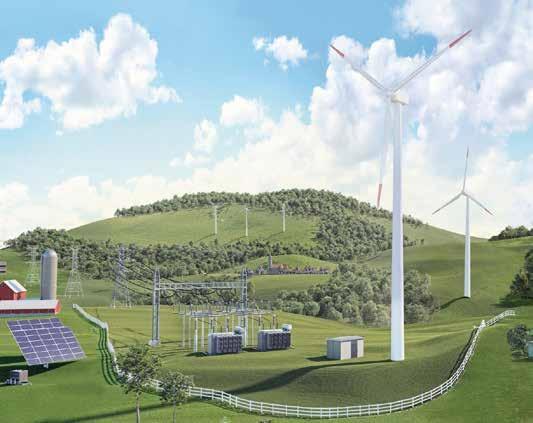
To advance businesses in this field, Phoenix Contact is providing tailored solutions for all needs. In Southeast Asia, our priority lies in executing knowledge transfer from our headquarters to our local partners and customers. We are leveraging the expertise across the different regions to innovate and create a sustainable competitive advantage for all stakeholders involved.
To initiate this process, the company has established The Application Center Singapore, which serves as a customercentric sales service provider for the
subsidiaries in the Southeast Asia and East Asia region.
This regional hub specializes in delivering application-based support, with a keen focus on providing prompt technical support and solutions through a consultative approach.
Structured training programs are also offered by the Application Center Singapore, alongside sales-enablement media materials, including informative demos and engaging videos. To ensure effective communication, the center also provides local language support, bridging communication barriers with colleagues of a different first language.
The Phoenix Contact SEA headquarters in Singapore is also expected to move its premise to a new location in October. This milestone not only offers a more expansive office space but also marks the birth of our dedicated Customer Technology Center (CTC).
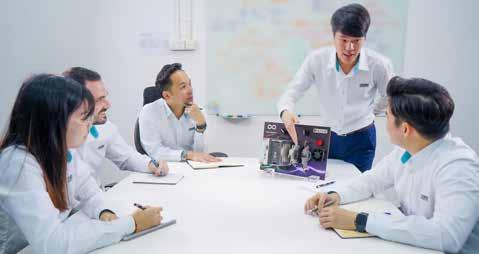
This center will serve as the heart of our customer-centric approach, fostering stronger connections and deeper understanding between us and our valued clients.
From turning insights into tangible innovations to nurturing enduring business partnerships, Phoenix Contact Southeast Asia is dedicated to providing exceptional experiences in this era of connectivity and sustainability.

To find out more about our industryleading solutions and customer service support, contact us at:
info@phoenixcontact.com.sg









MALAYSIA | FBI Publications (M) Sdn Bhd

Unit 9-3, Jalan PJU 5/6, Dataran Sunway, Kota Damansara, 47810 Petaling Jaya, Selangor.
Tel: (+603) 6151 9178
Whatsapp: (+60) 12 639 4271
E-mail: my@asiafbi.com
SINGAPORE | Fireworks Trade Media Pte Ltd (HQ)
1 Scotts Road, #24-10, Shaw Centre Singapore 228208
Sales Hotline: (+65) 31351211
Email: sg@asiafireworks.com
INDONESIA | PT Fireworks Indonesia
Jl. Suryopranoto No. 11F Kel. Petojo Selatan, Kec. Gambir Jakarta Pusat 10160
Tel: (+62-21) 5088 2917
Email: info@fireworksbi.com
THAILAND | FBI Publications (Thailand)
Promphan 2 office & Residence, 8th Floor (Office Zone, Room 807)
1 Soi Lat Phrao 3, Lat Phrao Road, Jompol, Chatuchak, Bangkok 10900
Tel: (+66) 2513 1418

Fax: (+66) 2513 1419
E-mail: info@fireworksbi.com
PHILIPPINES | Fireworks Trade Exhibitions and Conferences Philippines, Inc
U1207 12/F The Trade & Financial Tower, 32nd St. Cor. 7th Ave.
Bonifacio Global City, Taguig City
Tel: (+63) 2 7902 0900
Sales Hotline: (+63) 2 927 704 0888
Email: phil@fireworksbi.com






